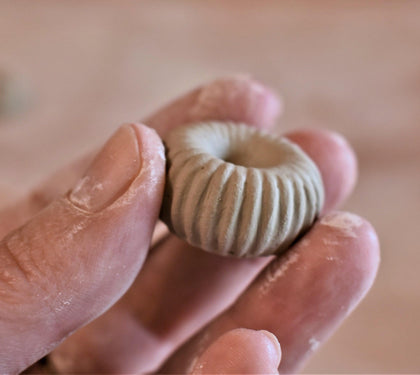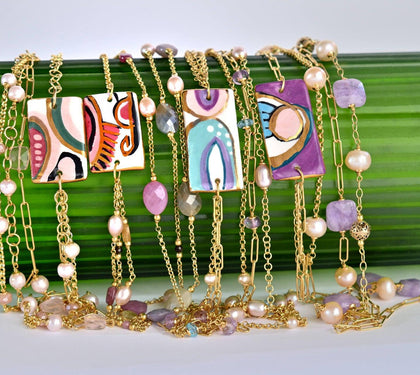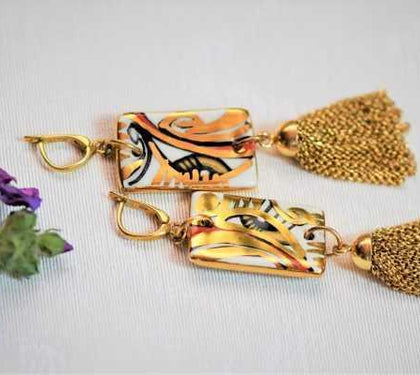Isolde's Gold is a brief description of the gold application techniques using the mission and brush methods.
Gold is an element that fascinates me, for its qualities and that, therefore, deserves great attention and study. In the creation of my jewels, in fact, it is never missing and, if I can choose, I always look for the one at 24 carats , the noblest.
THE details The metal parts of Isotta jewels are in 925 silver and always have a high thickness gold plating in 18 carat gold, more resistant to rubbing, and some details are sometimes in Vermeil gold.
The gilding it's an art to which I dedicate continuous study, working and experimenting in the workshop.
In applying gold to other materials that make up my jewels, I am rigorously inspired by the ancient artisan techniques of our tradition. Specifically, we know that there are three types of gold plating techniques:
– in gouache
– on a mission
– like a brush
The first ancient technique is still applied today to wooden backgrounds that are able to support a good layer of plaster base; it allows the burnishing of the gold leaf with the agate stone, in order to obtain a shiny and brilliant, mirror-like surface.
The second one provides the application of a thin 24-karat gold leaf using the gilding mission, which is the adhesive used to adhere the gold leaf to a surface. It is not a simple glue, but must be very light, invisible, must not retain water, must adhere gently and have the right strength. Personally, I used it in the creation of my earrings in ebony wood which gave me great satisfaction having appreciated, during the processing, the movement of the gold leaf.
The gilding I use most often is the brush one , which I apply on ceramic surfaces, with third firing , or even on some crystals natural. Liquid gold appears as a brown solution, which must be spread and cooked at appropriate temperatures in order to obtain the gold effect. I use high percentages of gold, to obtain a high covering effect of liquid gold.
Of course, applying liquid gold to dark or black surfaces is particularly difficult.
The percentage of gold concentration that I use is 999.9‰. For example, liquid gold at 12% means that in 100 grams of liquid gold there are 12 grams of gold. This is because the remaining suspended fluid is used for application with the brush.
After applying it with a fine and delicate pass with a brush, I proceed to firing, respectively, at 730°C – 750°C for porcelain and at 680°C – 710°C for ceramic. Only after firing will you be able to admire the gold, yellow and shiny effect.




